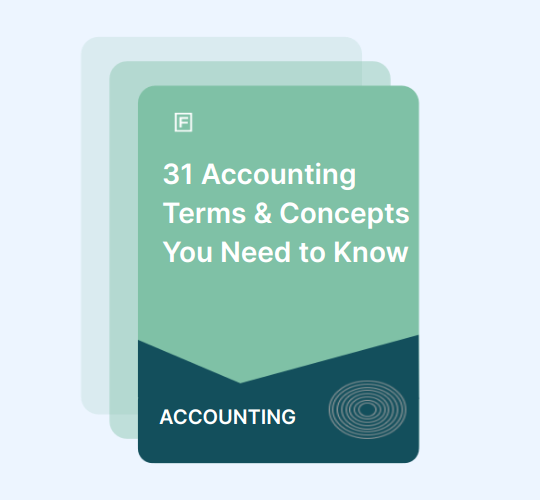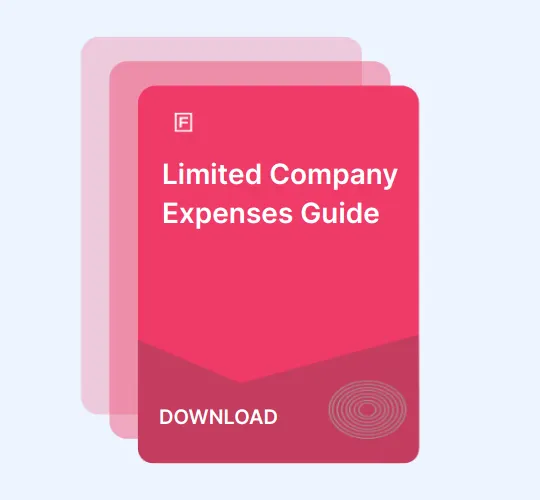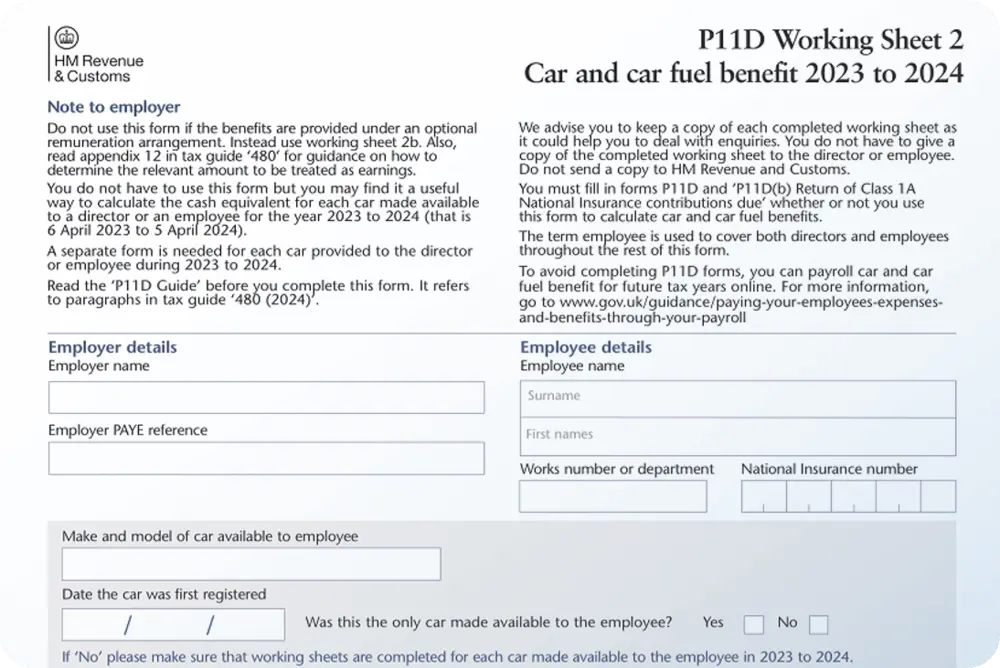General Accounting Terms You Need to Know
Whether you're self-employed or running a small business, you need to stay on top of your business finances.
While you can delegate your company's financial affairs to your accountant, it's still important to have a good grasp of the essentials-such as basic accounting terms and concepts. With this knowledge, you'll be better able to communicate with financial professionals, team members and potential investors.
To help you get started, we've written up an introductory guide to accounting terms you need to know:
Accounts payable (AP)
This refers to money owed to the business by its creditors (suppliers, vendors and other service providers). These are recorded as a liability on the balance sheet.
Accounts receivable (AR)-
This refers to money owed to the business by its debtors (clients and customers). The amounts are recorded as an asset on the balance sheet.
Accruals
Accruals are amounts that are unaccounted for at the end of the accounting period. These can be expenses that have been incurred or revenue that has been earned, but aren't yet recorded in the accounts.
Assets
Any resource that is owned by a company. There are two main types of assets: current assets and non-current assets. Current assets are expected to be consumed within a year, while non-current assets are expected to be held for longer than a year.
Balance sheet-
The balance sheet shows how much a business owns (assets), owes (liabilities) and the amount that is left over for its owners (owner's equity) at a point in time.
Cash flow
Cash flow refers to the total amount of money that is moving in and out of your business.
Chart of accounts
The chart of accounts is a listing of all the accounts used in the general ledger of the business.
Cost of goods sold (COGS)-
The total of all costs associated with producing your products or services.
Credit
An accounting entry that increases a liability or owner's equity account, or decreases an asset or expense account. The term may also be used to refer to an entry on the right side of a T-account.
Debit
An accounting entry that increases an asset or expense account, or decreases a liability or owner's equity account. The term may also be used to refer to an entry on the left side of a T-account.
Depreciation
The measurement of the decline in the worth of an asset.
Common methods of depreciation include: straight line, units of production, sum-of-years-digits and double-declining balance.
Dividends-
Dividends are a payment of profit that a limited company distributes to its shareholders.
It is the money remaining after all business expenses and liabilities, as well as outstanding taxes (including VAT and Corporation Tax) have been paid off.
Generally Accepted Accounting Principles (GAAP):
In the UK, the GAAP is a set of accounting standards published by the UK's Financial Reporting Council (FRC) for reporting financial information.
General ledger
A record of all the accounts that a business uses.
The accounts are classified into three categories: assets, liabilities and equity accounts.
Profit & loss (P&L)
The P&L is a financial statement that shows how much money your business has made or lost.
Liabilities
Debts and obligations of a company.
There are two main types of liabilities: current liabilities and non-current liabilities. Current liabilities (otherwise known as short-term liabilities) are due within a year, while non-current liabilities are due after a year.
Equity
Equity can have several meanings in accounting.
Firstly, it refers to the net amount of finances an owner has invested in the company.It can also refer to the residual value of assets less liabilities, as represented by the accounting equation ‘Equity = Assets - Liabilities'.
Expenses
Costs incurred by a company for revenue generation.
A few common types of expenses a business may incur are:
- Fixed expenses: The total amount of the expense doesn't change over the short-term, despite changes in sales volume or other business activities. Examples include lease and rent payments.
- Variable expenses: As its name suggests, the total amount of the expense varies in proportion to changes in sales, production or other business activities. Examples include salaries, utility expenses or costs of raw materials.
- Operating expenses: Expenses incurred for activities that aren't directly related to the production of goods or services. Examples include administrative expenses, or legal and financial fees.
Net income
Otherwise known as net profit, net income refers to a business' financial position when the total revenue is more than the total expenses.
Present value (PV)
Present value is a calculation that measures the current value of a sum or stream of money to be received in the future, through adjusting for inflation and interest.
Return of investment (ROI)
A metric of profitability used to measure the gain or loss that an investment generates, relative to the sum of money invested.
Revenue
The amount of money a company receives from selling its goods or providing its services.
It refers to the amount earned before expenses are deducted.
Trial balance
A trial balance is a report that lists the balances of all general ledger accounts of a business at a specific point in time.
An expense should be recorded in the same period that the related revenue is earned.
<p>Whether you're <a href="https://goforma.com/self-employed" target="_blank">self-employed</a> or running a small business, you need to stay on top of your business finances. </p><p>While you can delegate your company's financial affairs to your <a href="https://www.goforma.com/packages/accountants-for-self-employed" target="_blank">accountant</a>, it's still important to have a good grasp of the essentials-such as basic accounting terms and concepts. With this knowledge, you'll be better able to communicate with financial professionals, team members and potential investors. <br></p><p>To help you get started, we've written up an introductory guide to accounting terms you need to know:<br></p><h3><strong>Accounts payable (AP)</strong> </h3><p>This refers to money owed to the business by its creditors (suppliers, vendors and other service providers). These are recorded as a liability on the balance sheet.<br></p><h3><strong>Accounts receivable (AR)</strong>-</h3><p>This refers to money owed to the business by its debtors (clients and customers). The amounts are recorded as an asset on the balance sheet.<br></p><h3><strong>Accruals</strong></h3><p>Accruals are amounts that are unaccounted for at the end of the accounting period. These can be expenses that have been incurred or revenue that has been earned, but aren't yet recorded in the accounts. <br></p><h3><strong>Assets</strong></h3><p>Any resource that is owned by a company. There are two main types of assets: current assets and non-current assets. Current assets are expected to be consumed within a year, while non-current assets are expected to be held for longer than a year.<br></p><h3><strong>Balance sheet</strong>-</h3><p>The <a href="https://www.goforma.com/small-business-accounting/what-is-balance-sheet-profit-loss" target="_blank">balance sheet</a> shows how much a business owns (assets), owes (liabilities) and the amount that is left over for its owners (owner's equity) at a point in time. <br></p><h3><strong>Cash flow</strong></h3><p>Cash flow refers to the total amount of money that is moving in and out of your business.<br></p><h3><strong>Chart of accounts</strong></h3><p>The <a href="https://www.accountingcoach.com/chart-of-accounts/explanation/2" target="_blank">chart of accounts</a> is a listing of all the accounts used in the general ledger of the business. <br></p><h3><strong>Cost of goods sold (COGS)</strong>-</h3><p>The total of all costs associated with producing your products or services. <br></p><h3><strong>Credit</strong></h3><p>An accounting entry that increases a liability or owner's equity account, or decreases an asset or expense account. The term may also be used to refer to an entry on the right side of a <a href="https://www.accountingcoach.com/blog/t-account" target="_blank">T-account</a>. <br></p><h3><strong>Debit</strong></h3><p>An accounting entry that increases an asset or expense account, or decreases a liability or owner's equity account. The term may also be used to refer to an entry on the left side of a T-account.<br></p><h3><strong>Depreciation</strong></h3><p>The measurement of the decline in the worth of an asset. </p><p>Common methods of depreciation include: <a href="https://www.accountingtools.com/articles/2017/5/15/straight-line-depreciation" target="_blank">straight line</a>, <a href="https://www.accountingtools.com/articles/2017/5/17/units-of-production-depreciation" target="_blank">units of production</a>, <a href="https://www.accountingtools.com/articles/2017/5/17/sum-of-the-years-digits-depreciation" target="_blank">sum-of-years-digits</a> and <a href="https://www.accountingtools.com/articles/2017/5/17/double-declining-balance-depreciation" target="_blank">double-declining balance</a>. <br></p><h3><strong>Dividends</strong>-</h3><p><a href="https://www.goforma.com/corporation-tax/what-are-dividends" target="_blank">Dividends</a> are a payment of profit that a limited company distributes to its shareholders. </p><p>It is the money remaining after all business expenses and liabilities, as well as outstanding taxes (including VAT and Corporation Tax) have been paid off.<br></p><h3><strong>Generally Accepted Accounting Principles (GAAP)</strong>: </h3><p>In the UK, the <a href="https://www.icaew.com/technical/financial-reporting/uk-gaap" target="_blank">GAAP</a> is a set of accounting standards published by the UK's Financial Reporting Council (FRC) for reporting financial information.<br></p><h3><strong>General ledger</strong></h3><p>A record of all the accounts that a business uses. </p><p>The accounts are classified into three categories: assets, liabilities and equity accounts. <br></p><h3><strong>Profit & loss (P&L)</strong></h3><p>The <a href="https://www.goforma.com/small-business-accounting/what-is-balance-sheet-profit-loss" target="_blank">P&L</a> is a financial statement that shows how much money your business has made or lost. <br></p><h3><strong>Liabilities</strong></h3><p>Debts and obligations of a company. </p><p>There are two main types of liabilities: current liabilities and non-current liabilities. Current liabilities (otherwise known as short-term liabilities) are due within a year, while non-current liabilities are due after a year. <br></p><h3><strong>Equity</strong></h3><p>Equity can have several meanings in accounting. </p><p>Firstly, it refers to the net amount of finances an owner has invested in the company.It can also refer to the residual value of assets less liabilities, as represented by the accounting equation ‘Equity = Assets - Liabilities'.<br></p><h3><strong>Expenses</strong></h3><p>Costs incurred by a company for revenue generation. </p><p>A few common types of expenses a business may incur are: </p><ul><li><strong>Fixed expenses</strong>: The total amount of the expense doesn't change over the short-term, despite changes in sales volume or other business activities. Examples include lease and rent payments.</li><li><strong>Variable expenses</strong>: As its name suggests, the total amount of the expense varies in proportion to changes in sales, production or other business activities. Examples include salaries, utility expenses or costs of raw materials. </li><li><strong>Operating expenses</strong>: Expenses incurred for activities that aren't directly related to the production of goods or services. Examples include administrative expenses, or legal and financial fees.<br></li></ul><h3><strong>Net income</strong></h3><p>Otherwise known as net profit, net income refers to a business' financial position when the total revenue is more than the total expenses. <br></p><h3><strong>Present value (PV)</strong></h3><p>Present value is a calculation that measures the current value of a sum or stream of money to be received in the future, through adjusting for inflation and interest. <br></p><h3><strong>Return of investment (ROI)</strong></h3><p>A metric of profitability used to measure the gain or loss that an investment generates, relative to the sum of money invested.<br></p><h3><strong>Revenue</strong></h3><p>The amount of money a company receives from selling its goods or providing its services. </p><p>It refers to the amount earned before expenses are deducted. <br></p><h3><strong>Trial balance</strong></h3><p>A <a href="https://www.myaccountingcourse.com/accounting-basics/trial-balance" target="_blank">trial balance</a> is a report that lists the balances of all general ledger accounts of a business at a specific point in time.</p><p>An expense should be recorded in the same period that the related revenue is earned.</p>
Top Accounting Concepts
We've outlined key accounting concepts you need to know, in order to have a better understanding of how your small business accounting works:
Accrual concept
All revenues and expenses are to be taken into account for the period in which they are earned or incurred, regardless of whether cash is received or paid out.
This differs from cash basis accounting, which recognises income and expenses when they are received or paid.
Accounting period
Only financial records relating to a specific time period should be included.
For example, if you were preparing a cash flow statement for the first quarter of 2020, you wouldn’t include transactions from December 2019.
Consistency concept
Once a specific accounting method is chosen, that method should continually be used unless there are legitimate reasons for not doing so.
This ensures that financial statements across different accounting periods can be reliably compared.
Going concern
There is the assumption that your business will continue its operations for the foreseeable future.
Following this, businesses may defer the recognition of revenue and expenses to a future period.
Conservatism concept
Revenue should be recognised only when there is a reasonable certainty that they will be received, while expenses and liabilities are recognised sooner—when there is a reasonable possibility that they will be incurred.
Economic entity concept:
The finances and transactions of a business are to be kept separate from that of its owners, partners, shareholders or related businesses.
Materiality concept:
Any financial transactions that could materially affect business decisions should be recorded.
An item is considered material if not including the information creates significant impacts on the decisions of users of the financial statements. This results in relatively minor transactions being recorded, so that the financial statements represent an accurate overview of the company’s financial position.
Matching concept:
An expense should be recorded in the same period that the related revenue is earned.











%20(1).webp)
























.webp)